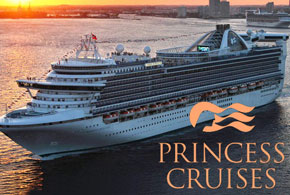When tourists step onto a cruise ship, they expect to be wowed by the overall experience. However, a vessel at sea represents one of the most challenging environments possible, and the technologies involved are no exception.
There are Internet connectivity issues to deal with, bandwidth limitations to manage, and data and information distribution obstacles to overcome. “Technology has become an important part of the picture,” states Nate Craddock, co-project lead for Princess@Sea, a mobile app and content system developed for Princess Cruises passengers.
In late 2012, a project team at Princess Cruises launched the initiative to deliver a connected experience for passengers. The Princess@Sea app delivers news and information—including itinerary and port information, shop hours, restaurant menus, and daily events and activities— directly to any mobile device using iOS or Android.
The app provides customization, so guests can receive content based on their interests, such as dining or entertainment. It also lets them connect with other passengers through a messaging app, so they can stay in touch while at sea or meet for drinks or a show. Finally, guests can view their stateroom account details at any time.
Technology Enhances the Passenger Experience
Princess Cruises worked with Acquia, a Web and software content cloud firm, to modernize a platform on Drupal and introduce Princess@Sea. The app and content system—which supports four languages (English, Spanish, Japanese and Simplified Chinese)—went live in June 2013, when the Royal Princess launched.
“There has always been a need to deliver value to passengers, and this is a way to further enhance the experience,” Craddock says.
The app is now available across the entire fleet of 17 ships. So far, more than 40 percent of passengers download the app and try it out during the cruise, and nearly 20 percent register to use all of its features. The app also delivers practical benefits for Princess Cruise Lines: It cuts down on paper and reduces lines at the concierge desk.
The Drupal development platform was a key to building the system, says co-project lead Hillary Neaf. The company began using the open-source framework in 2007 to develop its corporate Internet framework. “It provides a high level of flexibility and the level of security we required,” she explains. “We have also benefited from the community support, and have used a lot of the Drupal forum and group input to develop the initiative.”
Among other things, the group used the platform to handle data migrations and language translations. In some cases, the tasks are complicated by satellite connectivity and ship-to-shore communications technologies. “In some cases, we are pushing the boundaries of a traditional content management system,” Craddock adds.
Princess Cruises also uses the platform to manage its video-on-demand and digital signage systems on board the ships. The company is expanding the system to provide enhanced features and promotions to passengers.
For example, instead of manually adding newsletter content to the Princess@Sea system, it will rely on the Drupal and Acquia platform to automate content aggregation and language translations.
“Princess@Sea delivers digital transformation in a disconnected environment,” says co-project lead Subbu Hariharan. “It’s an exciting and challenging proposition.”










